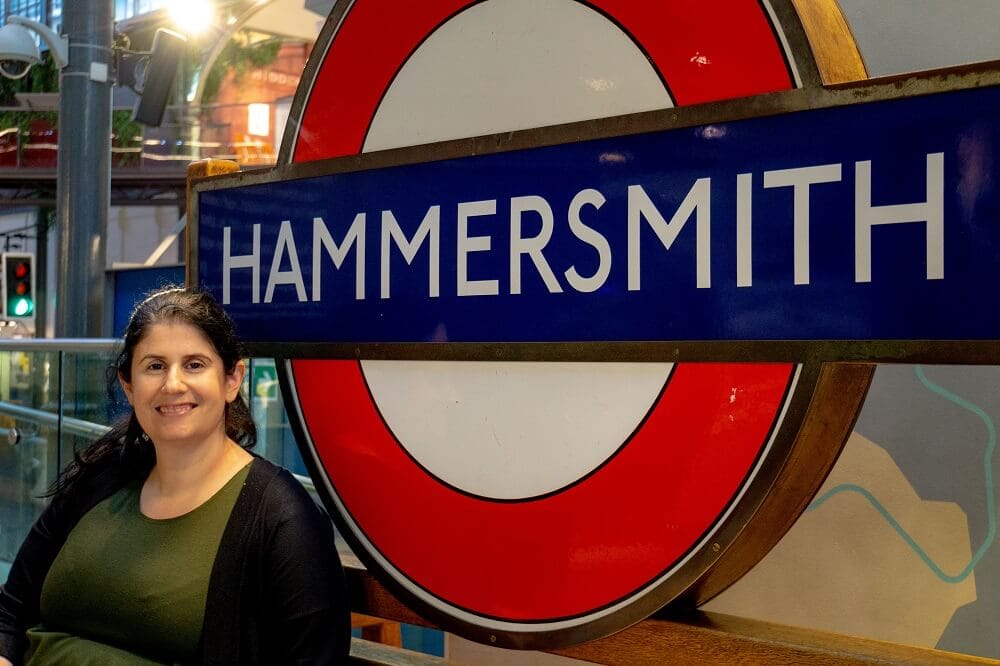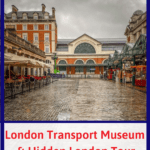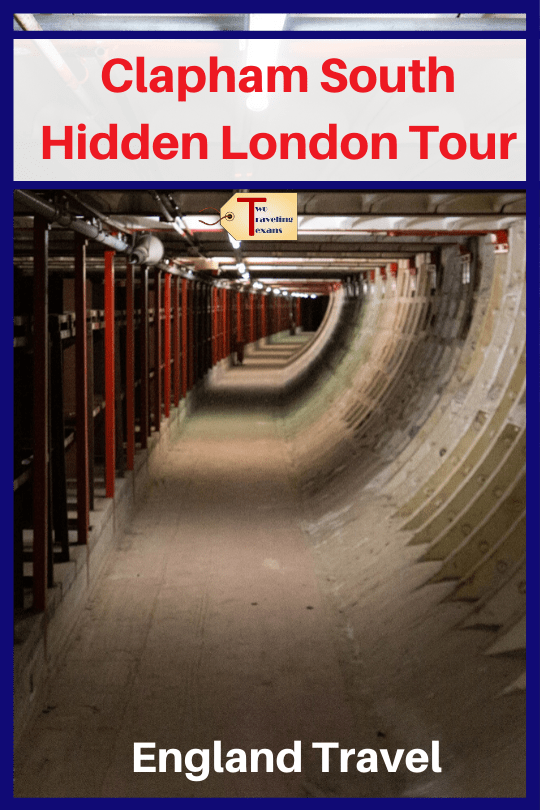Transport is the lifeline of any big city. It’s hard to think about what London would be without the Underground. Even when one tube line goes on strike, it can be frustrating to get around.
The Underground is more than just a transportation option. At times, it has been a shelter and probably saved many lives. There is so much history under the surface that few people know about. That’s why we wanted to take the Clapham South Hidden London Tour and visit the London Transport Museum. Let me tell you more about our experience.
Note: This post contains affiliate links. Please see disclosure for more information.
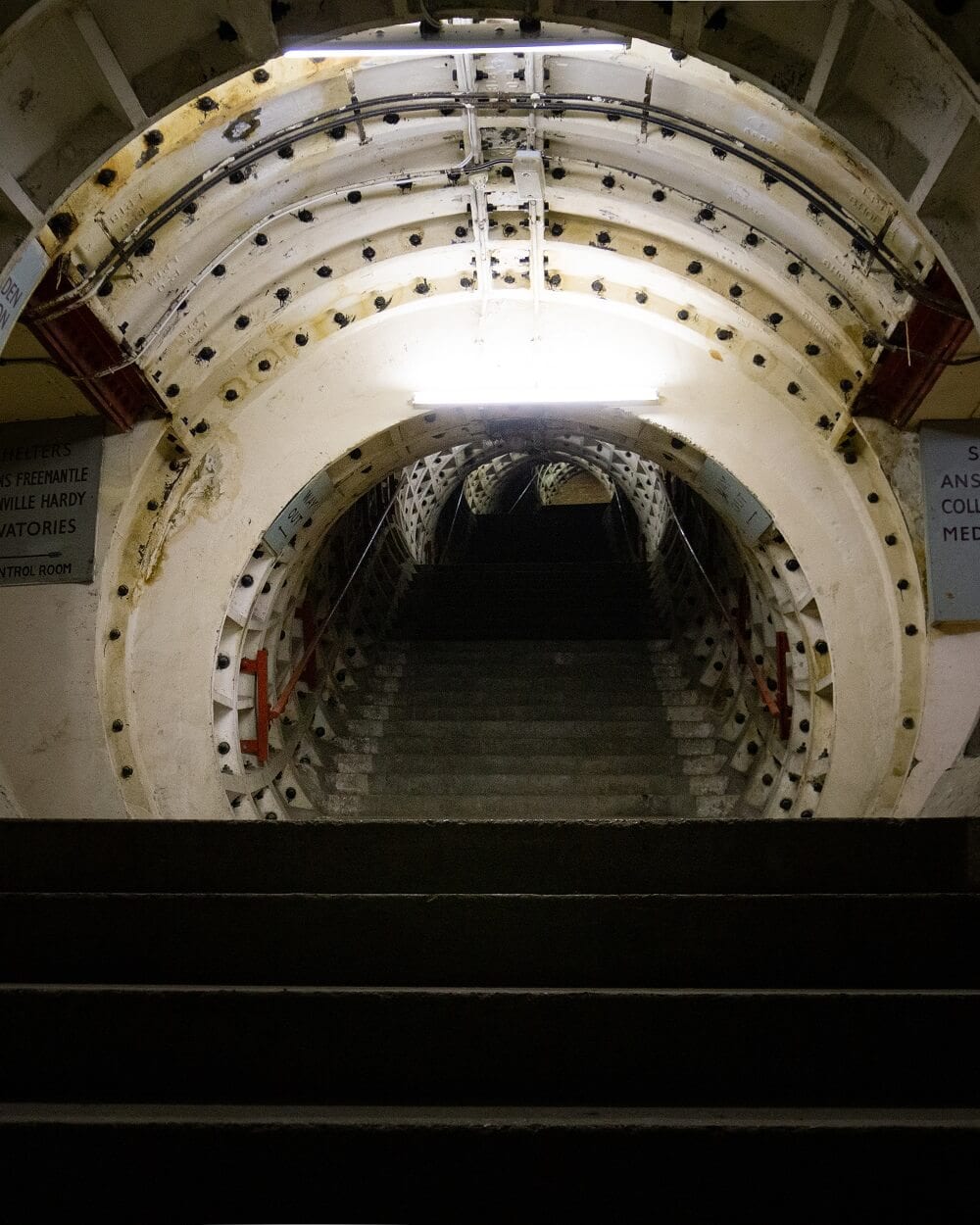
Note: Please use this post to plan future travel. Now it is important to stay home and save lives. The London Transport Museum has reopened but the Hidden London Tours are currently suspended. Check the status and get more information here. You might also want to try one of their virtual tours.
Contents
- What is a Hidden London Tour?
- Our Hidden London Clapham South Tour
- Clapham South Hidden London Tour Review
- How to Get Hidden London Tickets
- What to Bring on Your Hidden London Tour
- Is the Hidden London Tour good for kids?
- Visiting the London Transport Museum
- Tickets for the London Transport Museum
- Learning About London Transport
- Expert Tips for Hidden London Tours
What is a Hidden London Tour?
It’s an exclusive tour at a location rarely seen by the public. You get to go to the ‘forgotten’ parts of the Tube network to explore disused stations and tunnels, go behind the scenes at some of London’s busiest stations, and learn more of the City’s fascinating history with an expert guide.
Hidden London offers eight different tours. We chose to do the tour at the Clapham South Station. I thought it would be interesting to see the deep shelter. You can read about all the different tours that are offered here.
Our Hidden London Clapham South Tour
When we arrived at the Clapham South station, we saw a group of people already standing outside. They were also ready for the Hidden London underground tour. We all chatted for a few minutes and then the staff from Hidden London arrived. They checked our tickets and IDs to make sure they had an accurate list of everyone in case of an emergency. Then they gave us wristbands and the tour started promptly as scheduled.
We followed the staff outside the Clapham South Station and down the road. Then we went into what looked like a normal building from the outside. It was the entrance to the deep shelter.
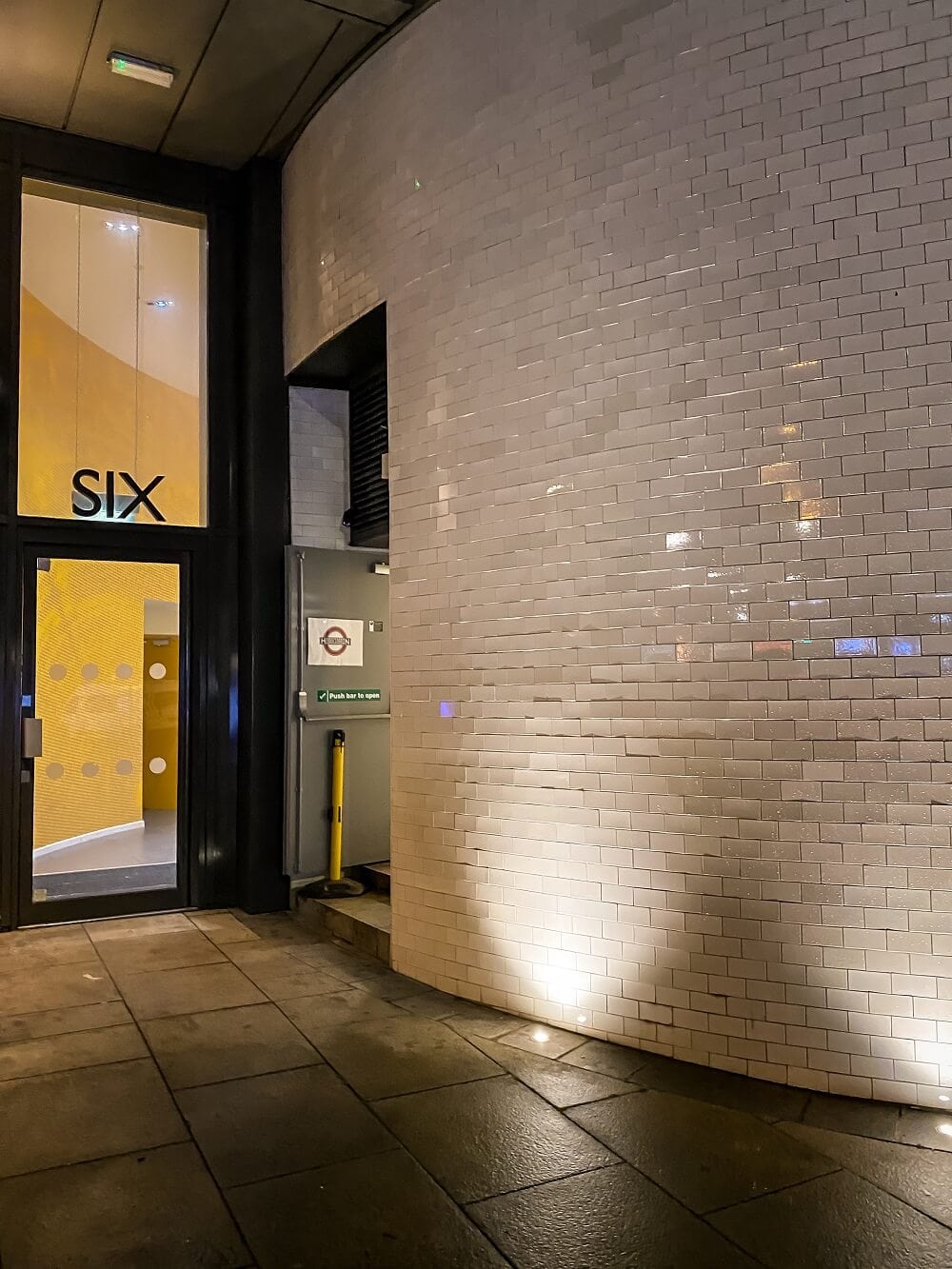
Inside the entrance, there was a coat rack and an area where you could leave belongings. There are no lockers but they told us that a security guard would be watching over things. We were also told that it would be chilly down in the shelter so it might be a good idea to hang on to our coats.
There are 180 steps down to the shelter and we were encouraged to take our time. The spiral staircase was wide, not too steep, and had handrails. It wasn’t long before we were in the shelter.

We met our tour guide, Matt, at the bottom of the stairs. He gave us the historical background to set the scene for the rest of the tour. People started using underground stations as shelters during The Blitz in World War II, but underground stations don’t have any facilities. The Blitz was nighttime bombing raids against London and other British cities by Nazi Germany that lasted from September 1940 – May 1941.
This deep shelter was one of eight that were built at stations along the Northern and Central lines. They started building it during the Blitz but it ended before the shelters were complete. We were standing 18 meters below the Northern line. There are about a mile of tunnels that would have been filled with 8,000 during an attack. The shelters were only open at night.
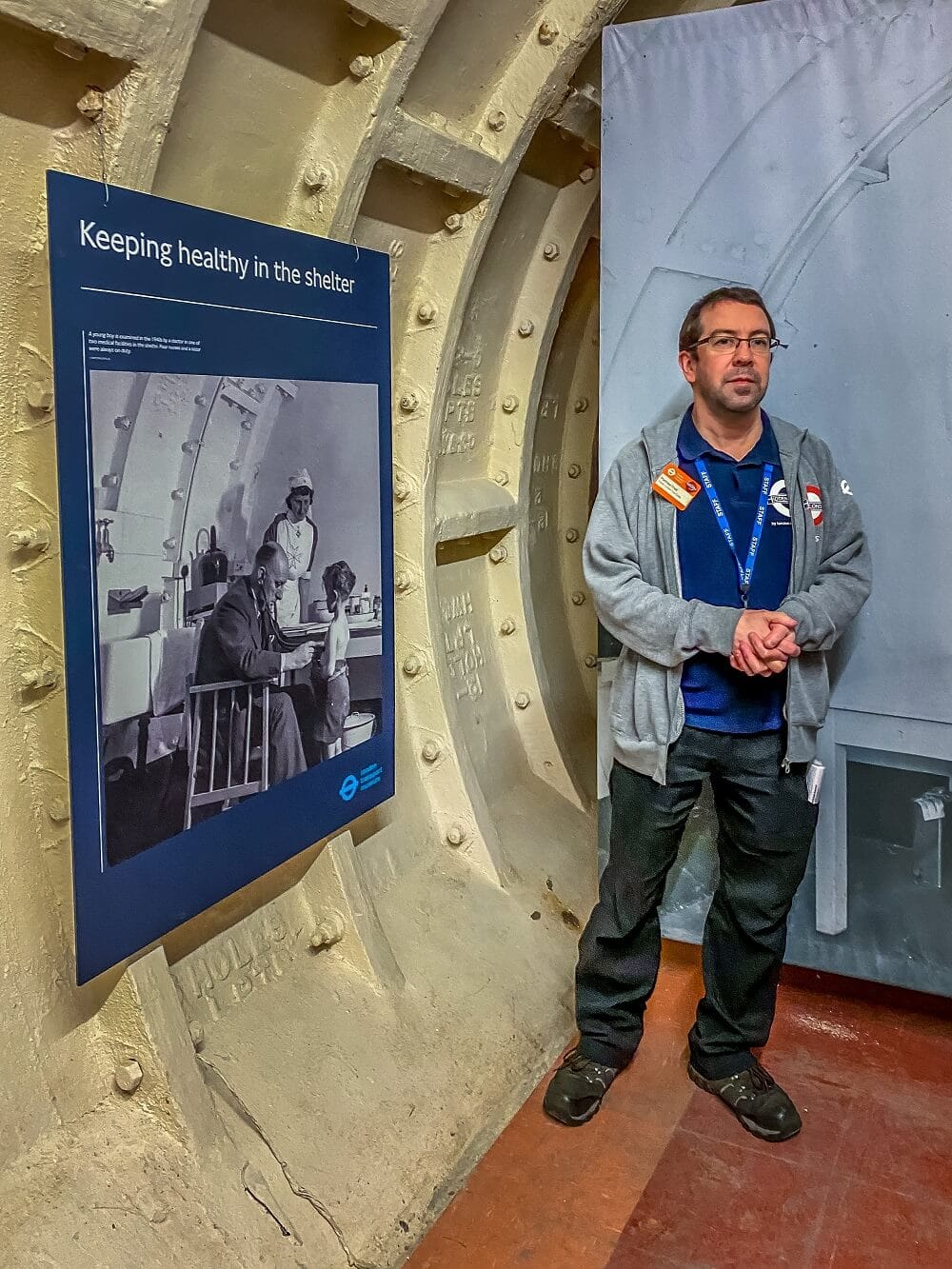
After our introduction, we went into the medical post area. There were lifesize photos so that you could see what it would have looked like when the shelters were in use. While this was before the invention of the National Health Service (NHS was established in 1948), they offered the medical service free of charge.
We went into the part of the tunnels where people would have slept. There were four tunnels on two levels. Each tunnel was 400 meters long. These were divided into 16 sub-shelters that were each named after a British naval officer. The names would make it easier for people to find their way around these underground tunnels.
The first area we went into was empty so you could get an idea of the size. Then we moved into another area where you could see the beds that people would have slept in. They were small bunks beds and there was not much room between the bottom, top, and middle bunks. Now I could see how they fit 8,000 people down here.
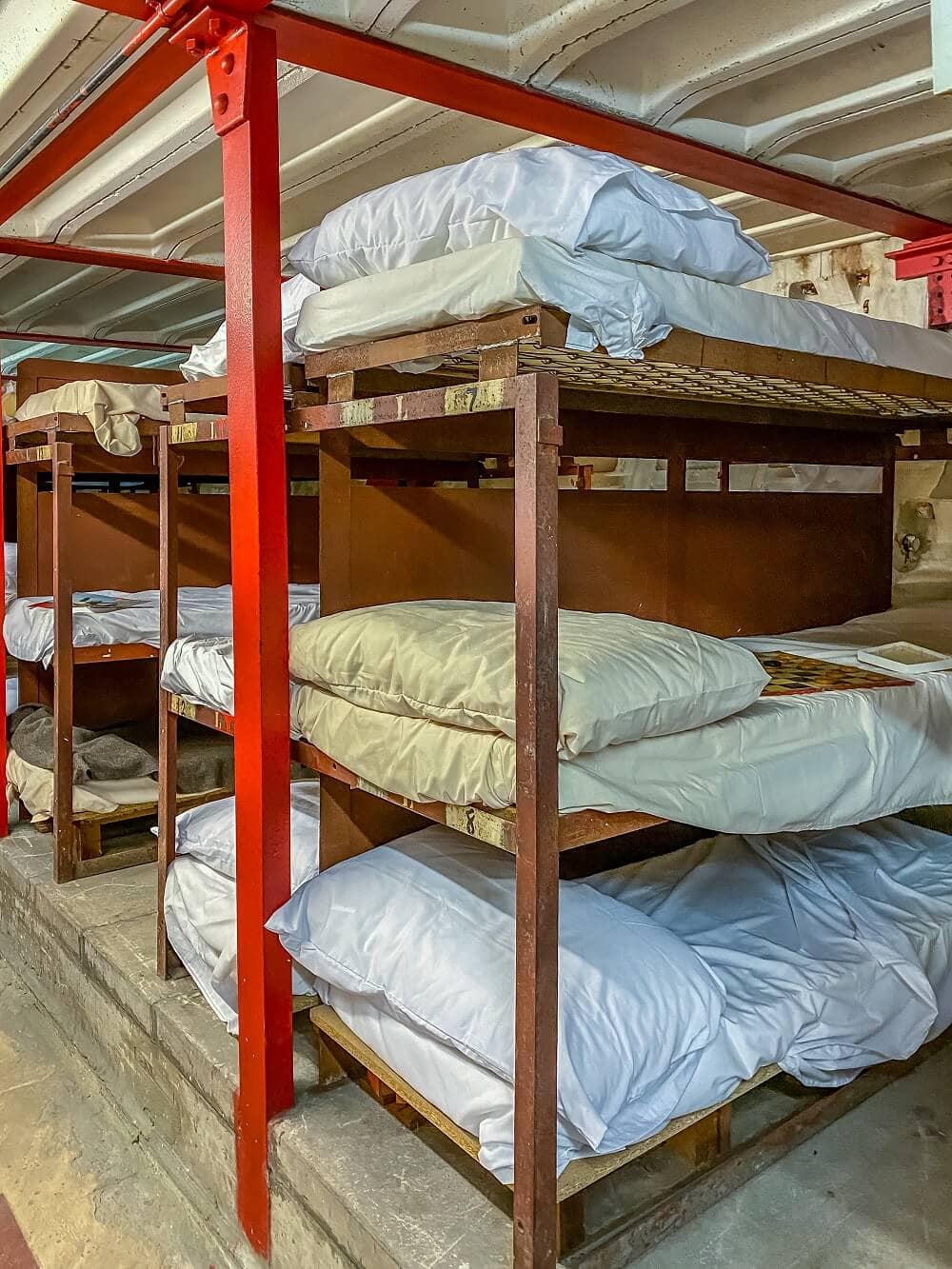
I was surprised to learn that in most areas of the tunnels smoking was allowed. They had a special ventilation system to circulate the air, but I am sure people like me that are sensitive to smoke would have had a hard time.
Matt told us that they did try to keep families together. Most people would just stay for the night and would have to bring their bedding with them each time. The shelter was in use until 1946 for those that had lost their homes.
In some places (marked with an orange sticker), you could still see graffiti left by residents. We mostly saw name and dates written but there were also a few drawings. Some marks were upside down because it had been written when the person was lying down.
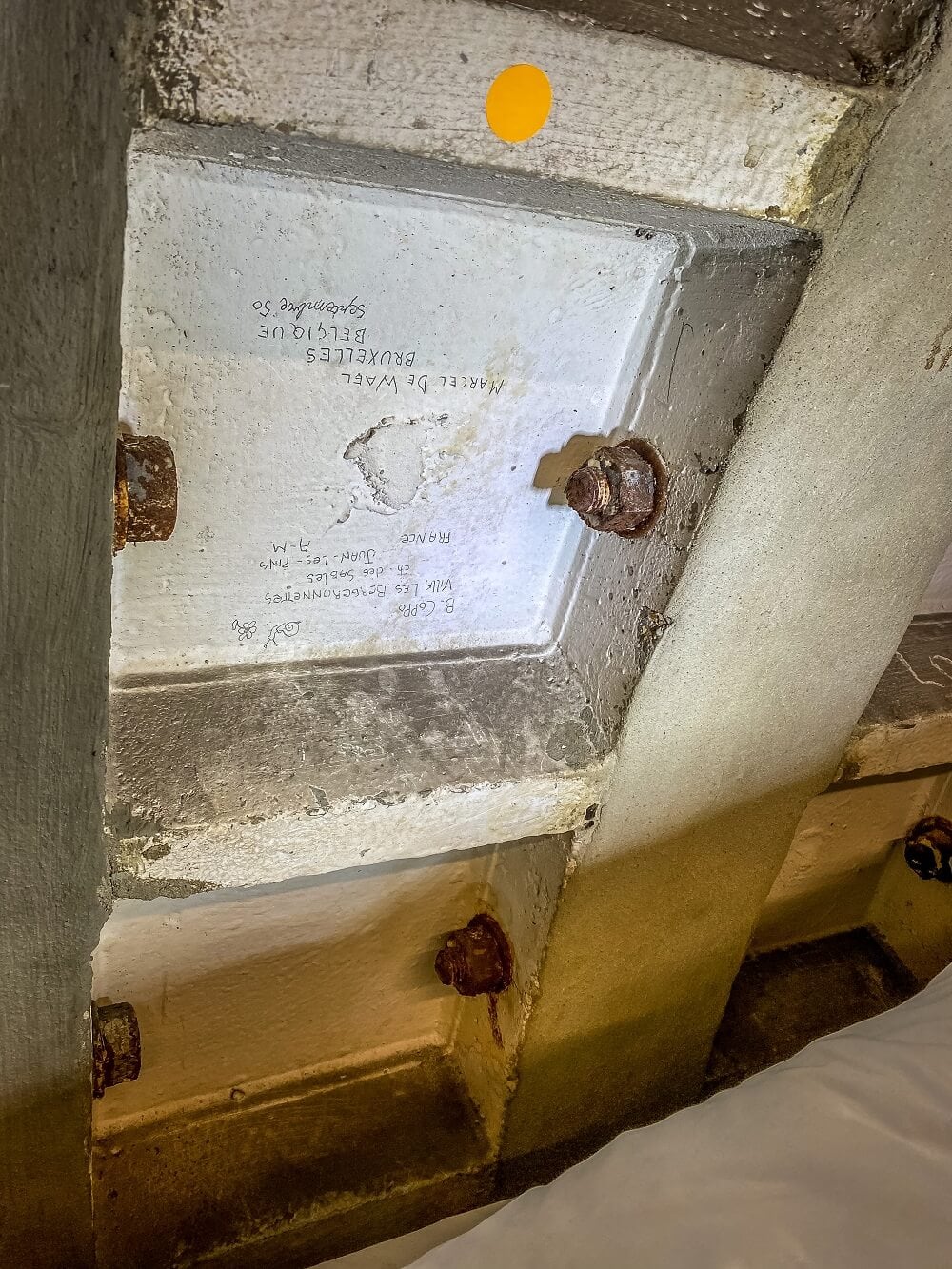
We also got to see one of the eight bathroom blocks they had in the shelter. All the equipment had been removed but they had another life-size picture to give us an idea of what it would have been like. Toilets were simply buckets which had to be emptied manually into the chemical hopper. Matt told us about how they used compressed air to operate the sewage ejector. Still, with the number of people in the shelter, I could only imagine how bad the smell would have been.

There was also a canteen in the shelter which would be stocked with three days worth of food. It wasn’t an elaborate menu, mostly sandwiches, cakes, soup, and tea. It was the only area that I saw on the tour that was marked as non-smoking. (Note the smoking restriction ended as soon as the canteen did and there was no wall to act as a barrier.) As expected, prices at the canteen were more expensive than food purchased above ground.
Throughout the tour, I kept thinking about the Deep Fan Bay Shelter we toured at the Dover Cliffs. That shelter was used for military personnel. By comparison, the Clapham South shelter was much bigger and seemed to be almost luxurious. Not sure I would agree that they were Underground Palaces as the government sometimes called them.
Next, we learned how the shelter was used after the war was over. At first, it was turned into the Penny Hotel. They reduced the capacity from 8,000 down to 4,000. It was a cheap place to stay if you didn’t mind the lack of privacy, modern bathrooms, or stairs.
Then in 1948, the Clapham subterranean shelter became home to 492 members of the Windrush Generation. These immigrants from Jamaica were given the right to settle in the UK by virtue of having been born in a British colony to help with the labor storage after the war. They were named the Windrush Generation because some traveled to the UK on the ship MV Empire Windrush. One of its most famous members was Sam Beaver King who was the first black mayor of Southwark and also founded the Notting Hill Carnival.
You may have heard of the Windrush Generation more recently. The Immigration Act of 1971 ended the rights of those born in British colonies to settle in the UK. Those already living in the UK when the Act became law in 1973 were automatically entitled to stay indefinitely. Some members of the Windrush Generation never applied for any official paperwork like a passport and the government never kept a full record of them. This lack of documentation led to some members of the Windrush Generation being wrongfully removed or detained in 2018. Read more about it here.

The members of the Windrush Generation lived in the Clapham shelter while they were looking for jobs. After they found employment, they moved to the Brixton area. Today, a large percentage of the population of Brixton are of Caribbean-descent and the Brixton market is known as the place to find Caribbean products in London.
After the Windrush Generation left, they rebranded the shelter as the Festival Hotel in conjunction with the Festival of Britain. The Festival of Britain was a national exhibition that took place at the South Bank in London for millions of visitors throughout the United Kingdom in the summer of 1951.
In 1956 after there was a fire in the Goodge Street shelter, tunnels could no longer be used for habitation. For a while, the government leased the space to private companies to use for archival storage. Then in 1998, the London Transport Museum purchased the space.
The money you pay for the Hidden London tours goes to the London Transport Museum which is a charity. In addition, to maintaining the spaces, they are trying to raise money to be able to add an elevator so that the Clapham South deep shelter will be accessible.
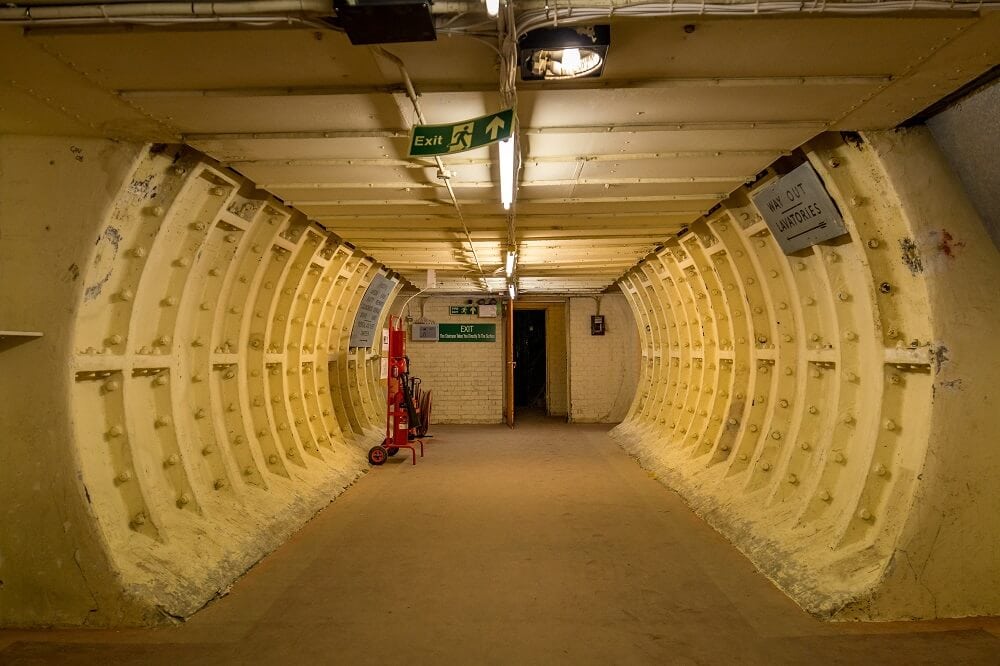
Then came time to climb back to the surface. There is no elevator, so you go up the same stairs that you came down. The staff told us to take our time. Most of the group took at least one break, I think we might have taken two. It wasn’t as hard as I thought it would be, but I definitely got my heart rate up.
Clapham South Hidden London Tour Review
We both enjoyed our tour. I was impressed with how much information our tour guide, Matt, shared. He was full of interesting facts and stories. It was a small group so it was easy to ask questions.
The tour lasted 70 minutes and was well-paced. We never felt rushed. I also appreciated that they made sure that we knew we could take our time on the stairs. The tour was well organized too. We started right on time and it was nice that there was additional staff to make sure no one got lost.
Going on the tour made me want to read up more on life in London during World War II and the Windrush Generation. I would also like to do some of the other Hidden London tube tours too.
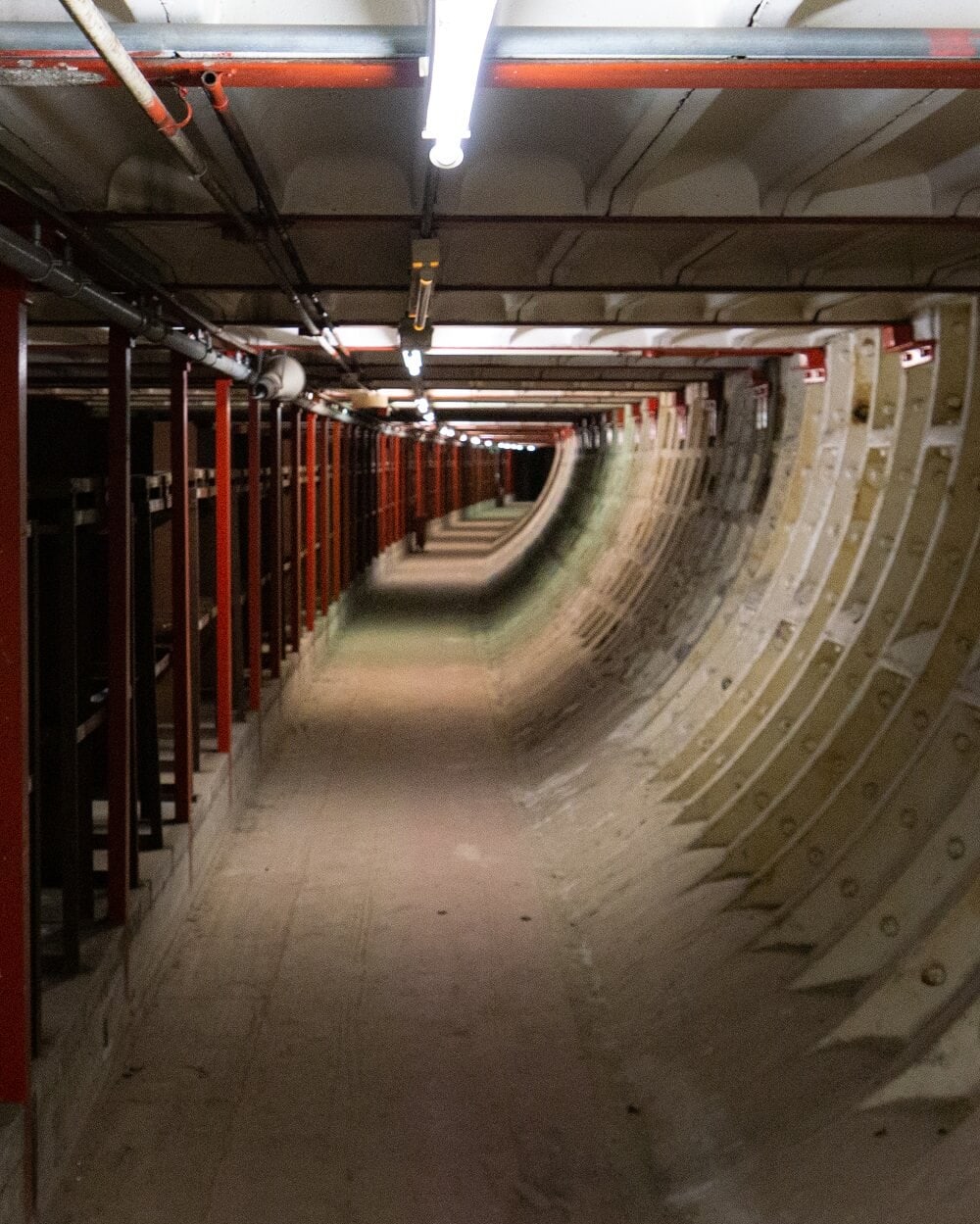
How to Get Hidden London Tickets
As you can imagine, Hidden London tour tickets are popular and do sell out. Plan ahead and buy them in advance here. They also offer packages that include food and film screenings.
Tickets for the Clapham South Hidden London tour come with a 50% off discount to the London Transport Museum that is good for 30 days. You will also get a 10% discount on all Hidden London merchandise in the London Transport Museum shop.
What to Bring on Your Hidden London Tour
For your tour, you will need to bring your ticket (electronic copy is fine), ID, camera, jacket, and appropriate footwear. You will need sturdy walking shoes as some of the tunnels are uneven. No heels or open-toe shoes are allowed, and your feet must be fully covered.
If possible don’t bring any large bags. You won’t want to be carrying it up all those stairs. They do have a space to leave belongings if needed.
Is the Hidden London Tour good for kids?
The Clapham South Hidden London tour is not designed for kids. They do not allow anyone under 14 on the tour. Children 14-16 years old must be accompanied by an adult.
If you are traveling with young children, go to the London Transport Museum. It has many interactive exhibits that kids will love.
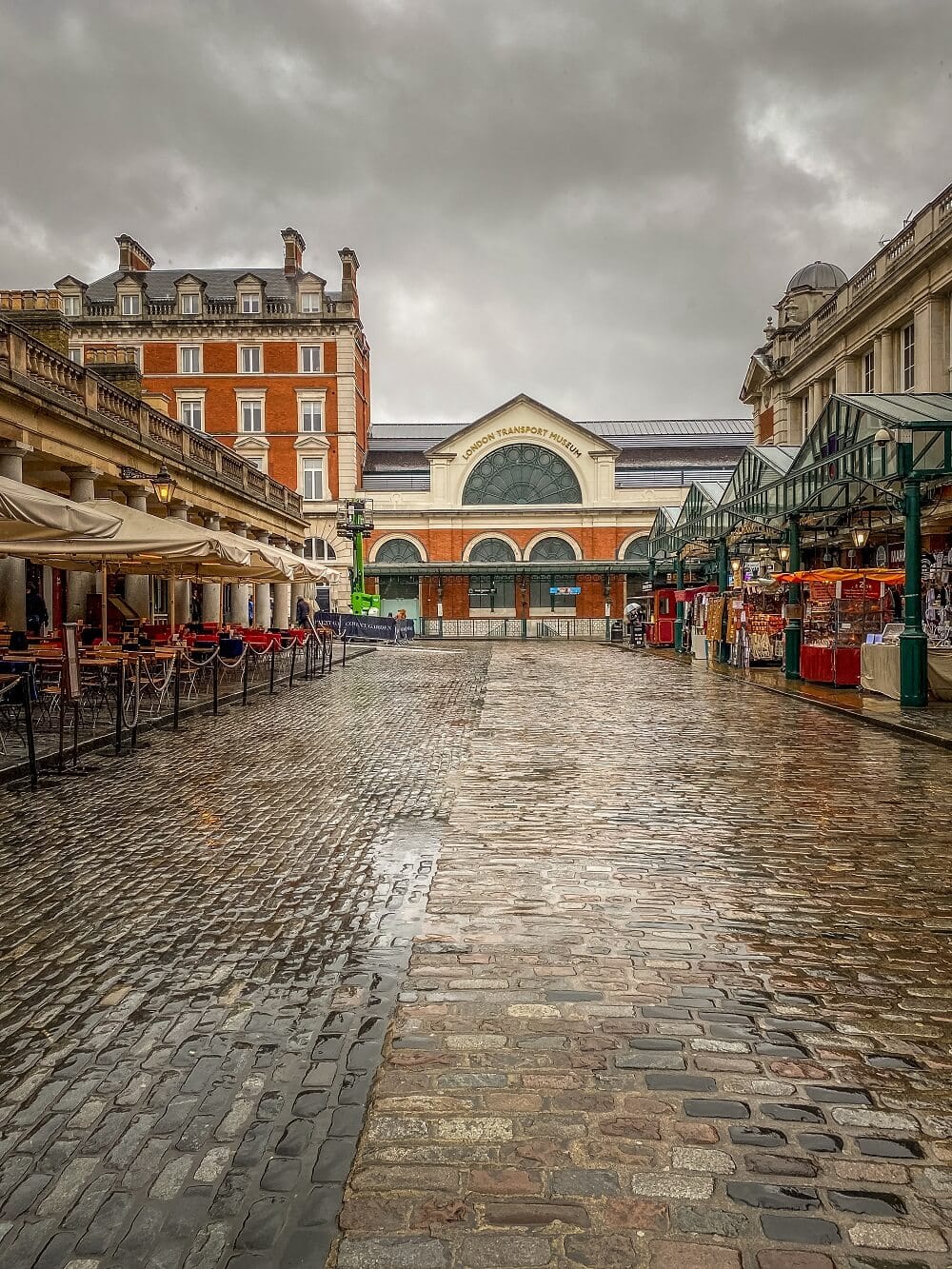
Visiting the London Transport Museum
If you are interested in history, trains, transportation, or engineering, you also need to visit the London Transport Museum. It is conveniently located in Covent Garden. The museum tells the story of transport in London going back to 1800.
The story begins on the second floor with the sedan chair which was an enclosed chair carried on poles by two chairmen. Then the early railroads started. There were also many horses used to pull buses and trams. Additionally, since London is located on the Thames, and early on there was only one bridge across, boats were an important transport option. You learn more details about how things progressed through a combination of artifacts and exhibits.

The main exhibition on the first floor was dedicated to the railroad. There was information about building the first underground railway – a section of the Metropolitan Line. As you might imagine, working conditions were quite challenging. They also had two old trains that you could board. I was impressed the seats were more comfortable than I expected!
After the main exhibit on the first floor, we went to the special exhibit about Hidden London. It explains some of the ways the abadoned tube stations have been repurposed. Some stations (like Clapham South) were used as shelters during World War II. A few stations have been used as filming locations. Highgate Station is now a protected bat habitat.
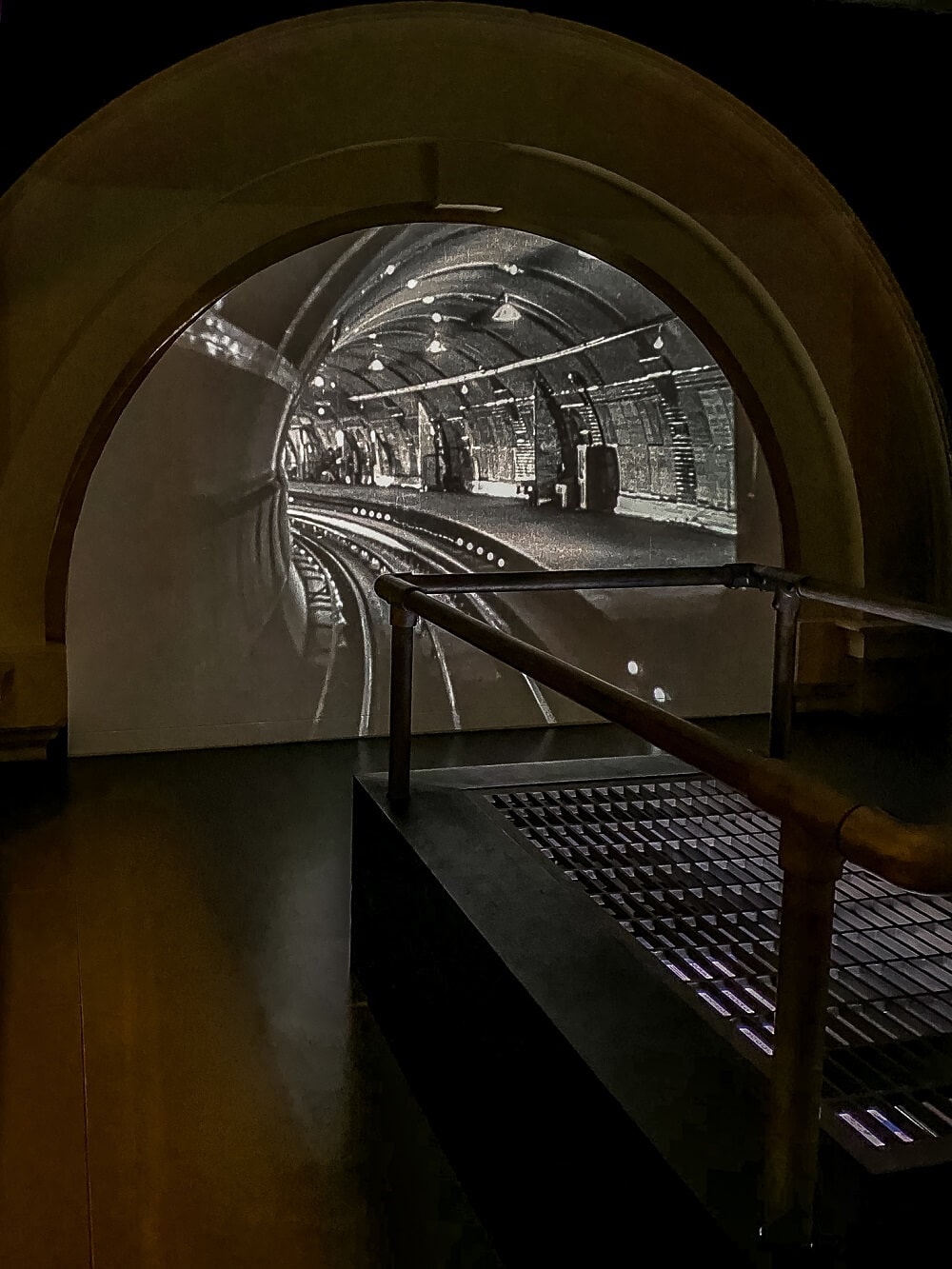
On the ground floor, there are buses, taxes, and trains from different eras. There are lots of fun photo opportunities and some interactive games. In between all the vehicles, there were also some interesting displays about the branding of the Underground, elevators and escalators, and how an American (Charles Tyson Yerkes) saved the Tube. It’s hard to imagine the Underground without the branding or those steep escalators.
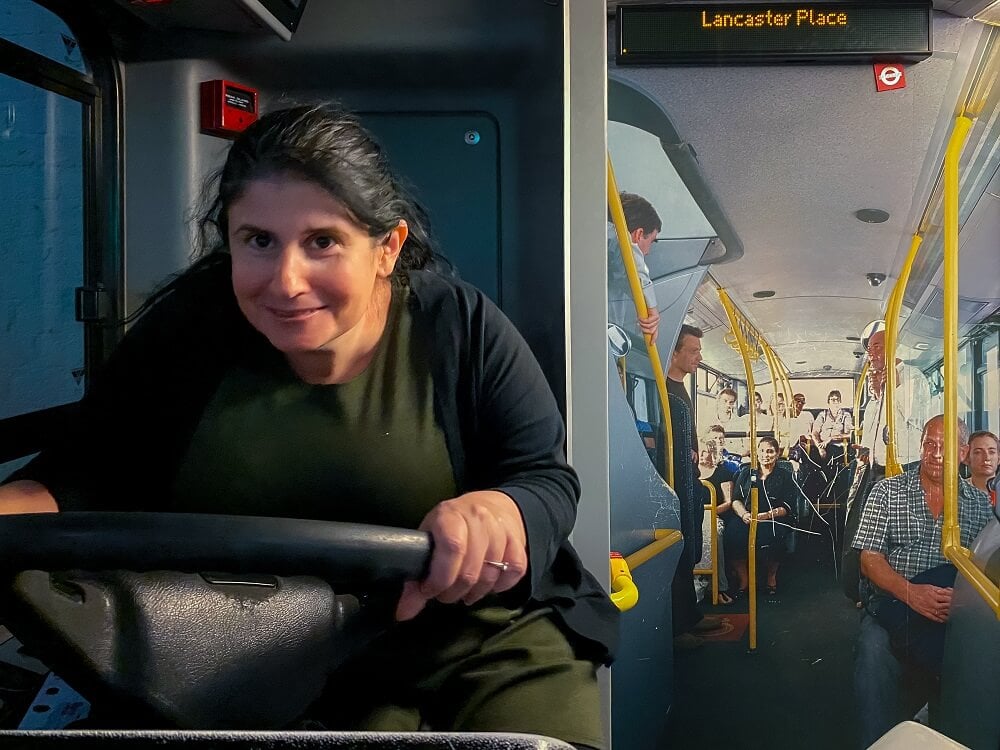
As you exit the museum, you pass through a section with material about more modern transport projects like Thameslink and Crossrail 2. Thameslink is a £6 billion project that began in 2009 to upgrade and expand the Thameslink rail network to provide new and longer trains between more stations to the north and to the south of London. Crossrail 2 is a proposed North–South rail link across London with stops at nine stations in Surrey to three in Hertfordshire.
Don’t miss the gift shop at the Transport Museum. They have a lot of creative and cute merchandise that would make the perfect souvenir of your London trip or a fun gift. The museum also has a canteen if you would like to grab a bite.

We spent about three hours at the London Transport Museum. You could probably see the museum in two if you don’t want to take as many photos as we did. If you want to read every board consider allowing four hours.
If you are interested in learning more about the history of transportation, there is also a popular transport museum in Switzerland.
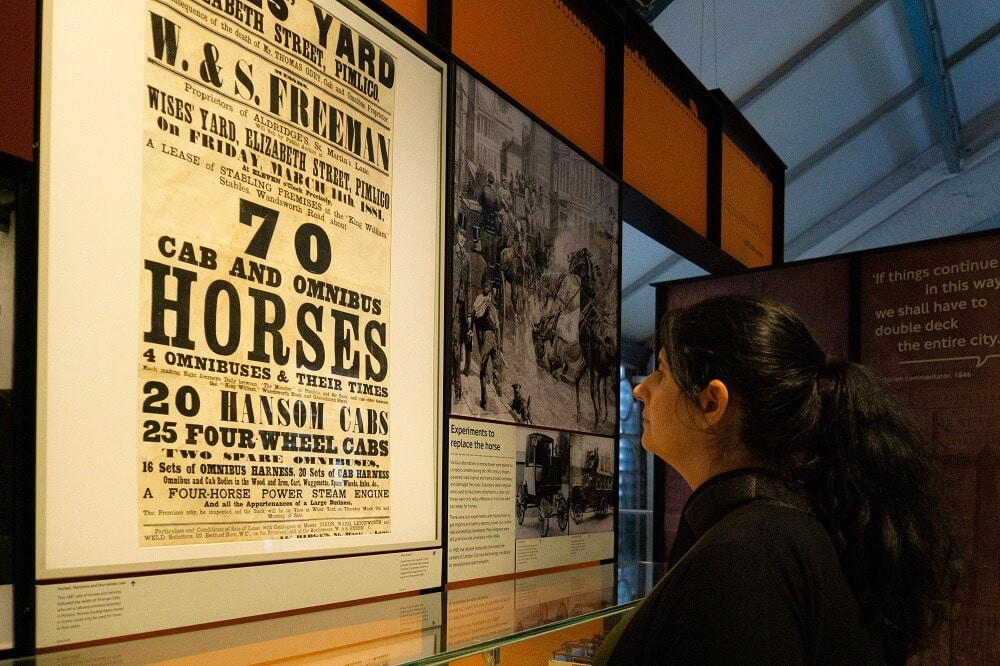
Tickets for the London Transport Museum
Admission to the London Transport Museum is £18 for adults, those under 17 are free. You can purchase tickets online in advance here and get a small discount here or just buy your tickets when you arrive.
Remember you get a discount on entrance to the London Transport Museum with your Hidden London ticket. To redeem this offer you need to bring your Hidden London tour ticket to the London Transport Museum and buy your ticket there.
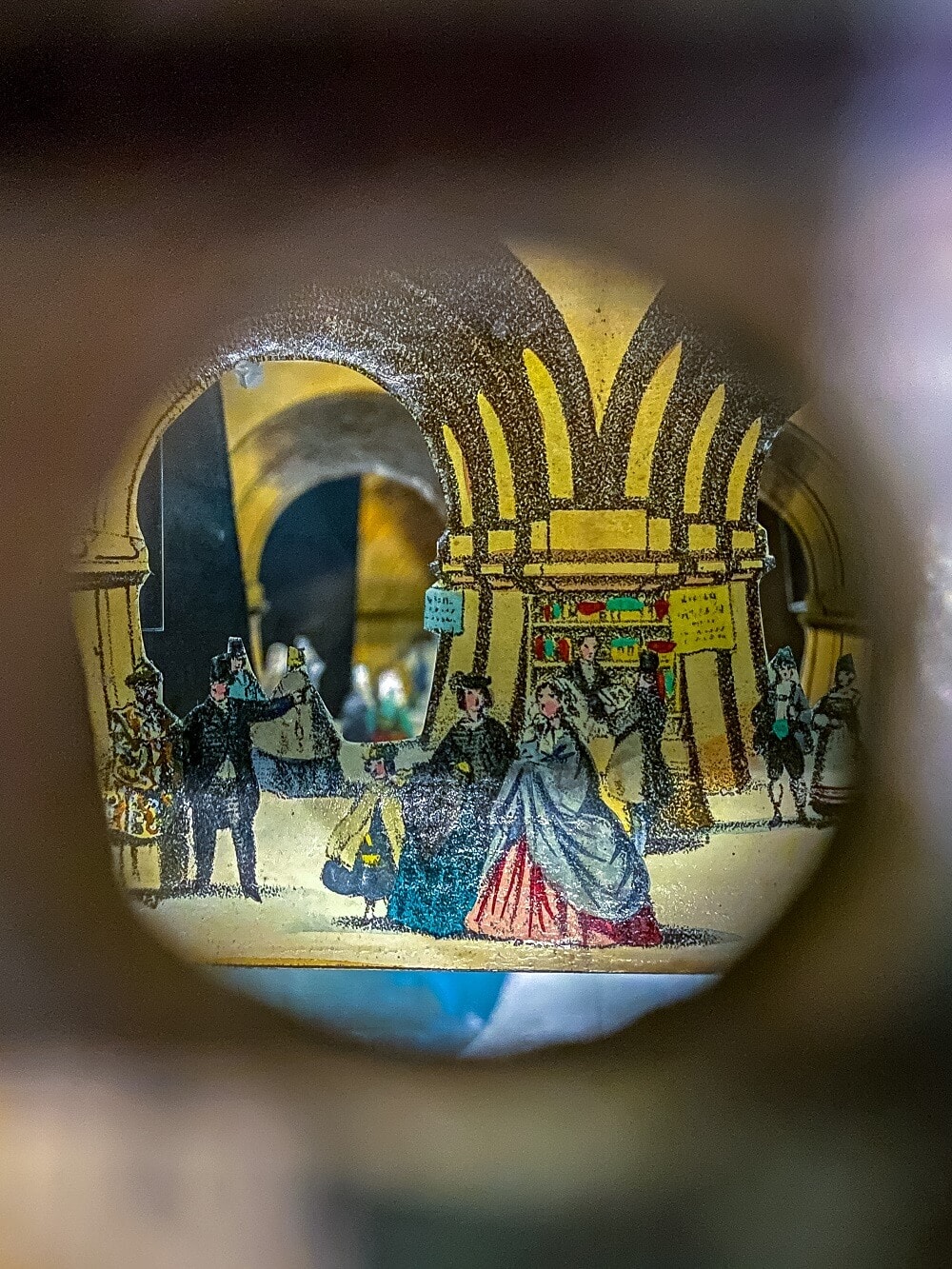
The London Transport Museum is also part of the London Pass. If you plan on doing a lot of sightseeing in London, the London Pass gets you into 80 + attractions (including the Tower of London and Windsor Castle) for one price. Learn more about the London Pass here.
Learning About London Transport
It was an educational and fun day with the London Transport Museum. I feel like it made me appreciate the transportation options that we have today. Additionally, our London underground tour made me feel grateful that I wasn’t alive during World War II.
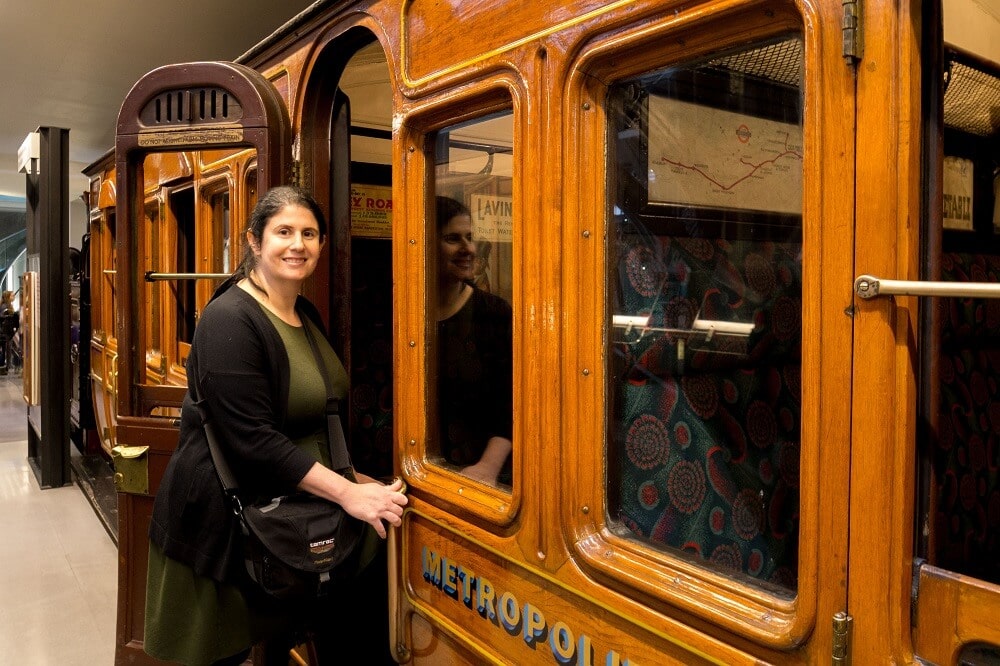
Since both the museum and tour were indoors, it was a smart thing to do in London in the winter. Have you gone on a Hidden London tour or visited the London Transport Museum?
-Anisa
Pin For Later
Expert Tips for Hidden London Tours
- Buy your tickets for your Hidden London tour in advance as they do sell-out.
- Take advantage of the discount to the London Transport Museum that is included with your Hidden London tour ticket.
- The London Transport Museum is included in the London Pass, but the Hidden London Guided Tours are not.
Disclosure: We were guests of the London Transport Museum. They provided us with complimentary tours and entrance to the museum so that we could share the experience with our readers.
This post also contains affiliate links. This means we will receive a small commission for some purchases made using links in our blog with no additional cost to you. Please be assured we would not promote any product unless we believe that our readers will also benefit. The commission does not influence the editorial content of this site.
Last Updated on September 9, 2020

